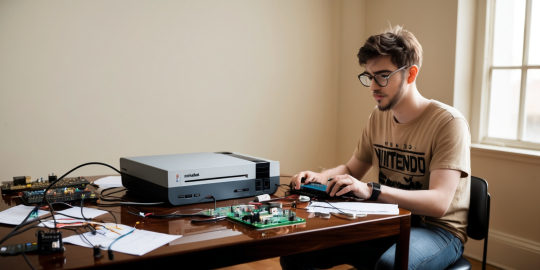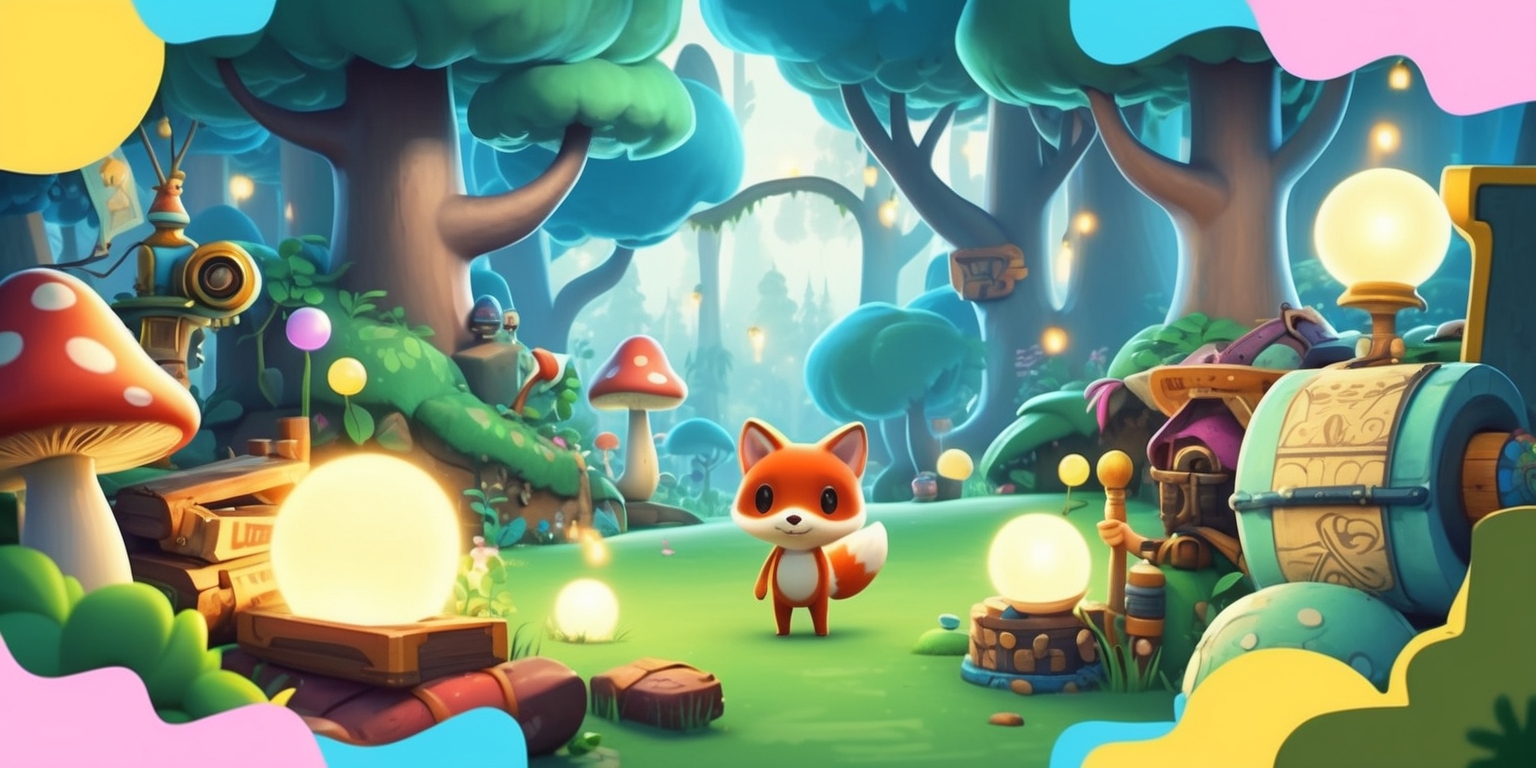
The new development venture for Nintendo’s upcoming console stands as a testament to ingenuity and the relentless passion of independent game studios. Born out of the desire to captivate audiences with something truly distinctive, the project fuses a classic gaming approach with novel peripheral functionalities. In a climate marked by intricate relationships between developers and platform holders, the narrative of an indie game conceptualized before the arrival of critical hardware underlines the high stakes and creative audacity inherent in modern game design. The ambitious endeavor challenges conventional timelines and underlines potential tensions in the release process, inviting a deeper look into the inner workings of game development and platform approval dynamics.
Pioneering Concepts and Uncharted Territory
This inventive game emerges at a fascinating intersection of technical potential and creative ambition. The studio, renowned for its past successes, opted to experiment with a fresh gameplay control scheme that tailors its mechanics specifically for the newer Joy-Con 2 capabilities. The approach leans heavily into a unique mouse control design that transforms the way players interact with familiar game elements. Exploring this non-traditional control method, developers have fashioned a variety of minigames that rely on precision and fast response. As a result, the project shifts away from standard direct control methods and instead encourages multitasking and creative command input, setting it apart in the gaming landscape. The anticipation surrounding such an innovative control scheme amplifies excitement in an otherwise conventional release cycle.
Controller Integration and Unconventional Design
Central to the game’s appeal is its groundbreaking integration of the Joy-Con 2 as a functional alternative input. The project capitalizes on the console’s promise of supporting mouse-like inputs to open up new gameplay mechanics that require acute precision and deliberate pacing. The developers have reimagined traditional interaction models by enabling multiple controllers to be used simultaneously in unconventional ways. Every minigame is meticulously crafted to highlight different aspects of this functionality, ensuring that players are constantly engaged and challenged. This integration not only broadens the application of the console’s hardware but also showcases the team’s commitment to exploring uncharted territories in gaming. It reinforces the idea that innovative game designs can arise even in the face of traditional industry constraints.
Overcoming Developmental Barriers Without Traditional Tools
The journey of this creative project is fraught with challenges, notably the lack of an official development kit at a crucial stage of its evolution. With Nintendo limiting the early distribution of the necessary hardware, the studio found itself in a precarious position, forced to revisit old methods and devise makeshift solutions for testing and refining gameplay. Instead of waiting passively for the developer kit, the team embraced alternative strategies, repurposing and reconfiguring available equipment to simulate the intended user experience. This proactive approach not only highlights the team's resourcefulness but also underscores the broader tension between platform holders and independent developers, who must navigate such restrictions while still delivering a product that lives up to modern standards.
Creative Inspirations and Influential Game Mechanics

The creative direction behind the game is enriched by a blend of nostalgic elements and contemporary inspirations. Drawing on influences from beloved titles and earlier gaming achievements, the team infused each minigame with a sense of homage and innovation. Elements reminiscent of classic puzzle-platform experiences appear alongside inventive challenges that echo modern cooperative games. In crafting its challenges, the development team looked to previous successes in the indie sphere, tailoring these inspirations to suit the new hardware's capacities. These echoes of past creativity serve not only to honor gaming history but also to stimulate a forward-thinking design mentality, encouraging experimental gameplay dynamics that are both engaging and thought-provoking for a diverse player base.
Technical Adaptations and Resourceful Testing Methods
Faced with the looming absence of an official development kit, the studio embarked on a journey of technical improvisation that stands as a prime example of industry resourcefulness. Utilizing a commonly available game engine, the team crafted a working prototype that mimics the intended environment by merging traditional desktop peripherals with repurposed Joy-Con controllers. This approach allowed developers to simulate the anticipated gameplay experience and fine-tune the interface for optimal performance. Each testing cycle provided valuable feedback, which informed subsequent iterations and refinements. By constructing a personalized testing framework, the studio circumvented the initial hardware setbacks and ensured that the gameplay mechanics and control schemes met the high standards expected by both the development team and the forthcoming audience.
Game Dynamics and Interactive Entertainment
The cornerstone of this initiative is an adventurous array of interactive challenges that serve to both entertain and engage players on multiple levels. The minigames, each with its own distinct personality, test various aspects of precision, timing, and strategy. In one challenge, players might find themselves navigating through intricate digital terrains, while in another, quick reflexes are essential to overcome a cascade of on-screen obstacles. The diversity in gameplay not only accentuates the potential of the hardware but also invites a wide range of gameplay styles. This design philosophy underscores the importance of versatility and adaptability in modern game design. The meticulously crafted challenges serve as a playground for innovation, Guaranteeing that every gaming experience unfolds with unexpected twists and turns refreshingly different.
Strategic Timing and Anticipated Launch Dynamics
The timing of the project’s unveiling comes at a critical moment in the console's launch cycle, eliciting both anticipation and strategic maneuvering from all parties involved. The decision to announce this title without the benefit of an official development kit signals a bold move by the studio, aiming to secure an early association with the new console during its launch window. This deliberate early commitment is intended to capture the interest of the console’s enthusiasts, who are eager to experience functionalities that push the system’s capabilities. Recognizing the potential benefits of being among the first to showcase the platform’s novel features, the developers managed to position their project as an exemplar of what lies ahead in the indie game segment. The initiative now rests on timely cooperation between the studio and the platform’s gatekeepers.
Operational Creativity in the Absence of Conventional Support
Arguably, the most distinctive quality of this… project is the way its creators have navigated the often challenging landscape of platform support without direct backing at the outset. The team’s decision to publicly share their progress, even before receiving the necessary hardware, illustrates a willingness to take calculated risks. By leveraging social media and community feedback, the studio has built an air of intrigue and collaboration that transcends the standard developer-publisher dynamic. This proactive communication strategy not only generates buzz among prospective players but also underscores the challenges faced by independent developers. While the formal relationships with platform representatives remain in a delicate state, the visible commitment and inventive problem-solving exhibited in this project have fostered a supportive network that eagerly anticipates further developments.
Visual Design and Interface Considerations
Although the project is principally defined by its unconventional control scheme, substantial attention has also been paid to the aesthetic and visual game components. The team responsible for development has meticulously sculpted each visual component, aiming to strike a balance between nostalgic charm and modern clarity. The interface design is crafted so that players can quickly decipher the various tasks and minigames, even under rapid gameplay conditions. Color palettes and dynamic animations are selected not solely for their aesthetic quality but also for their role in improving the accessibility of the game, with particular features implemented to cater to a range of players. This thoughtful approach ensures that, regardless of a player's background or visual familiarity with gaming interfaces, the experience is both captivating and intuitively navigable.
Interactive Features and User-Centric Mechanics
The detailed design of the game prioritizes a high degree of interactivity, turning traditional gameplay formats on their head. By embracing a user-centric approach, the project ensures that each minigame is engineered to deliver a refreshing sense of control and responsiveness. The gameplay feels both fluid and robust, with every action yielding immediate, tangible feedback on screen. Such emphasis on interactivity extends to the way the controls are repurposed to support new kinds of player input. This innovative rethinking of control schemes caters to an audience that is increasingly demanding novel and immersive gaming experiences. In embracing this level of interactivity, the studio makes a strong statement about the evolving nature of player expectations and the need for projects to push creative boundaries within the digital entertainment landscape.
Navigating Developer-Platform Relationships and Future Prospects
The progress of this project also serves as a microcosm for the broader issue of managing developer-platform dynamics in the gaming industry. The challenge of securing essential hardware highlights the delicate balance of power and negotiation that often impacts game release schedules. Despite the institutional hurdles and ongoing uncertainties with obtaining official support, the studio remains undeterred in its quest to innovate. The strategic decision to forge ahead and present a working preview of the game not only underscores the team’s determination but also poses important questions about the flow of creative freedom in a constrained ecosystem. In a market where platform exclusivity plays an influential role, such bold gestures have the potential to reshape how indie games are perceived and supported in future system launches.